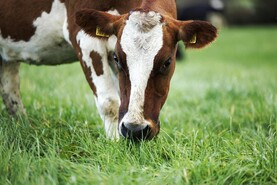I see that sheep hay milk and goat hay milk in Austria have been given protected status by the European Commission in the form of the Traditional Speciality Guaranteed seal.
Cow hay milk already has the seal in Austria and at the time it received its seal, way back in March 2016, it was dubbed the new champagne.
"What is hay milk?" I hear you ask.
In the case of cow hay milk, the cows are fed a no-silage diet and instead, fed on a variety of grasses and herbs during the summer. In the winter they are fed sun-dried hay. This diet is the reason hay milk has received the TSG approval.
The same applies to sheep and goats and any silage or fermented fodder is prohibited from being fed to them.
What is a TSG?
The seal means that the product, in this case the hay milk, and not the region or the area, as is the focus of Protected Geographical Indicators (PGI) and Products of Designated Origin (PDO), is the item given the seal.
The EU has said that the TSG seal boosts farmers’ revenues and maintains the population in less favoured or remote areas by promoting the rural economy.
It also increases the market value of products by guaranteeing that they are distinguishable from other similar products or foodstuffs.
Read more
What does protected geographical indication mean?
Austrian hay milk dubbed the new champagne
I see that sheep hay milk and goat hay milk in Austria have been given protected status by the European Commission in the form of the Traditional Speciality Guaranteed seal.
Cow hay milk already has the seal in Austria and at the time it received its seal, way back in March 2016, it was dubbed the new champagne.
"What is hay milk?" I hear you ask.
In the case of cow hay milk, the cows are fed a no-silage diet and instead, fed on a variety of grasses and herbs during the summer. In the winter they are fed sun-dried hay. This diet is the reason hay milk has received the TSG approval.
The same applies to sheep and goats and any silage or fermented fodder is prohibited from being fed to them.
What is a TSG?
The seal means that the product, in this case the hay milk, and not the region or the area, as is the focus of Protected Geographical Indicators (PGI) and Products of Designated Origin (PDO), is the item given the seal.
The EU has said that the TSG seal boosts farmers’ revenues and maintains the population in less favoured or remote areas by promoting the rural economy.
It also increases the market value of products by guaranteeing that they are distinguishable from other similar products or foodstuffs.
Read more
What does protected geographical indication mean?
Austrian hay milk dubbed the new champagne






 This is a subscriber-only article
This is a subscriber-only article










SHARING OPTIONS: